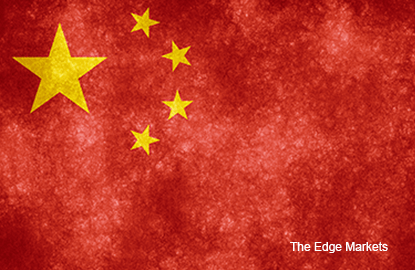
This article first appeared in The Edge Financial Daily, on January 29, 2016.
CHINESE leaders could be forgiven for finding Western pundits and central bankers a tad hypocritical.
After years of preaching the virtues of financial liberalisation, the latter have suddenly taken up the cry for China to impose “temporary” capital controls in order to stem record-setting outflows — an estimated US$1 trillion (RM4.21 trillion) in 2015 alone. The government has already begun subtly tightening controls. The arguments for going further, however, are misguided.
For a while now, China has been struggling with the so-called impossible trinity, which says that a country can have any two, but not all three, of the following: free capital flows, a fixed exchange rate or sovereign monetary policy. Chinese leaders claim to want to internationalise their currency, the yuan, and to open up the country’s closed financial system.
But for a little more than a year, declining interest rates and a lack of good investment options have encouraged Chinese to ship their assets out of the country. Investors comparing shaky Chinese provincial bonds to US Treasuries with similar yields do not need to contemplate the trade-off long.
A surprise devaluation in August intensified the outflow, as investors sought to avoid further depreciation by moving their money offshore. Meanwhile, the government’s attempts to prop up the currency are draining China’s foreign-exchange reserves at an alarming rate.
Even with US$3.3 trillion in reserves, the government cannot afford to spend US$100 billion a month on the effort indefinitely. The point where policymakers will need to choose between floating the yuan and imposing strict capital controls is approaching faster than many are willing to admit.
To assess the viability of capital controls, one needs to judge what they might accomplish and how and when they might be lifted. Proponents argue that they would at least give Chinese leaders more room to juice their sluggish economy.
No less than Bank of Japan governor Haruhiko Kuroda recently suggested that after imposing controls, China could safely ease “domestic monetary policy to stimulate consumption at home.”
True, output and retail sales are growing much more slowly than the 11% top line rate might suggest. Outflows, in fact, reflect a lack of confidence among Chinese citizens and companies about the Chinese economy. But boosting demand will require fundamental economic restructuring, including lowering housing and business costs. Capital controls by themselves will not do much to help.
In the meantime, further easing would place even more downward pressure on the yuan and on the controls themselves. The People’s Bank of China clearly recognises this dilemma: A leaked weekend memo quoted assistant governor Zhang Xiaohui as saying, “A too-loose liquidity situation may result in relatively big pressure on the yuan exchange rate.”
Others say that controls would afford China the time it needs to clean up the banking system, which is groaning under a mountain of debt. But those problems are the product of official policy, which for years involved running large balance-of-trade surpluses and importing capital to drive rapid investment, channelled by the government.
Even now, despite declaring the need to deleverage in 2016, Chinese leaders are still allowing credit to grow approximately twice as fast as gross domestic product. It is unclear what capital controls can accomplish if policymakers remain unwilling to address underlying problems.
More likely, such measures would encourage continued overinvestment and a build-up in debt, marking a final break with any attempt at reforming the Chinese economy. The measures almost certainly would not be “temporary.”
As one paper noted, capital controls have historically been “associated with poor governance” and in most cases studied, “did not support financial stability.” Even proponents admit they will take several years at least to unwind.
While Malaysia’s experience with capital controls after the 1998 Asian financial crisis is often cited as a success, its problems were temporary and due to an exogenous shock; neither is true of China’s challenges. That means China’s solutions must be different, too.
The first thing policymakers have to understand is that current outflows are driven by fear. The constant swerving in policy that has marked the past year has done little to build credibility with investors, whether foreign or domestic. If instead China demonstrated a clear, unambiguous commitment to financial reform, that would re-establish trust and ease at least some investor anxieties.
Second, China and the world need to recognise that it is better to liberalise now rather than down the barrel of a gun. Building a globally relevant currency means allowing foreigners to hold yuan assets and allowing risk pricing, admittedly a large psychological adjustment.
If China is to become a modern global economy, it must recognise that capital flows do not only go one way. Imposing capital controls could cause enormous problems domestically and internationally. The better strategy is to continue the march toward liberalising the yuan and China’s financial system. — Bloomberg View